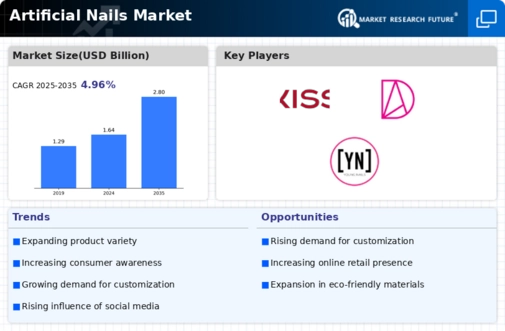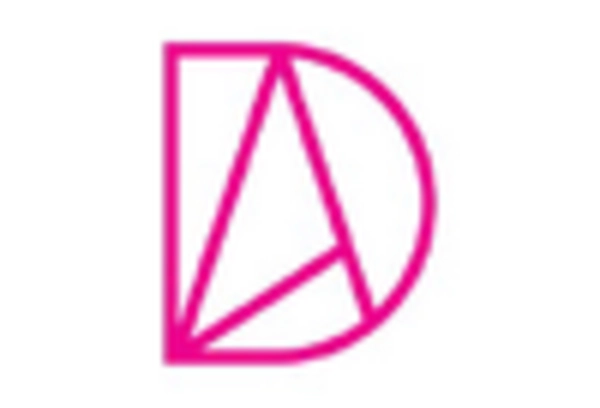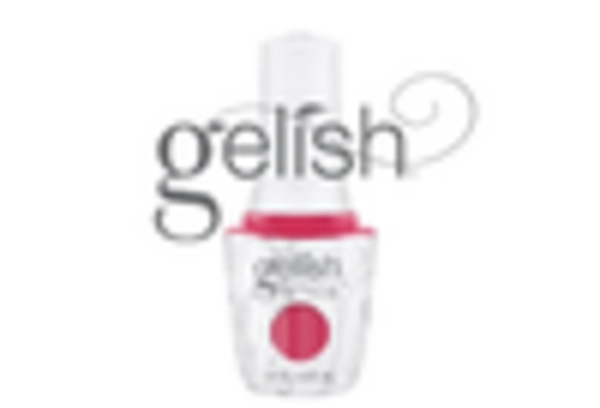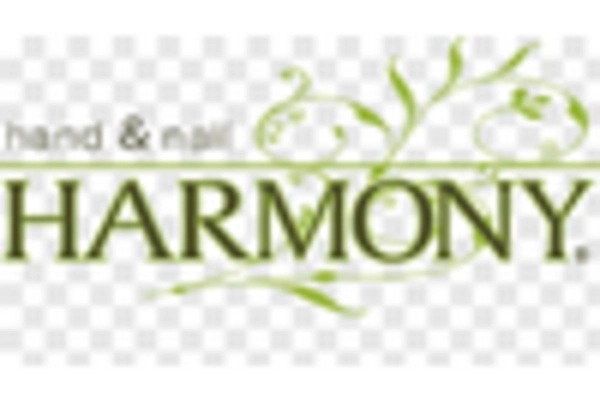Market Share
Artificial Nails Market Share Analysis
The artificial nails market has experienced significant growth and evolution in recent years, driven by changing fashion trends, technological advancements, and the increasing popularity of nail art and self-expression. Artificial nails, also known as fake nails or enhancements, refer to artificial extensions or overlays applied to natural nails to enhance their appearance and durability. One notable trend in the artificial nails market is the growing demand for customizable and DIY-friendly options. With the rise of social media platforms like Instagram and TikTok, consumers are increasingly seeking creative and personalized nail designs that reflect their individual style and personality. This has led to the popularity of artificial nail kits and press-on nails that allow users to create professional-looking manicures at home without the need for salon visits or expensive treatments.
Moreover, advancements in nail technology and materials have revolutionized the artificial nails market, offering consumers a wide range of options in terms of durability, flexibility, and aesthetics. Traditional artificial nails made from acrylic or gel materials remain popular choices among consumers due to their long-lasting wear and versatility in design. However, newer options such as polygel and dip powder nails have gained traction for their ease of application, lightweight feel, and natural look. These innovative nail enhancements offer improved durability and flexibility while minimizing damage to natural nails, appealing to consumers seeking long-lasting and low-maintenance nail solutions.
Another significant trend in the artificial nails market is the focus on sustainability and eco-friendly alternatives. As environmental consciousness continues to rise among consumers, there is a growing demand for artificial nails made from non-toxic, cruelty-free, and biodegradable materials. Some brands have responded to this trend by offering artificial nails made from recycled plastics, plant-based resins, and other sustainable ingredients, reducing the environmental impact of nail enhancements and supporting eco-conscious consumer choices.
Furthermore, the COVID-19 pandemic has influenced market trends in the artificial nails industry, as lockdowns and social distancing measures have led to increased interest in at-home beauty treatments and self-care practices. With nail salons temporarily closed or operating at reduced capacity, many consumers have turned to artificial nails as a convenient and safe alternative for maintaining their manicures at home. This has led to a surge in sales of artificial nail kits, press-on nails, and DIY nail art supplies, as consumers seek to express themselves creatively and experiment with new looks while staying indoors.
Additionally, the rise of social media influencers and beauty influencers has played a significant role in driving trends and shaping consumer preferences in the artificial nails market. Influencers often showcase their nail designs and manicures on social media platforms, inspiring their followers to try new styles, colors, and techniques. Brands frequently collaborate with influencers to promote their products and reach a wider audience, leveraging the power of social media to increase brand awareness and drive sales in the competitive beauty industry.
In conclusion, the artificial nails market continues to thrive and innovate as consumers seek customizable, sustainable, and convenient nail enhancement solutions. From DIY-friendly options and eco-friendly materials to advanced technologies and social media influence, artificial nails offer consumers endless possibilities for self-expression and creativity. As the market continues to evolve and adapt to changing consumer preferences and lifestyle trends, one thing is clear: artificial nails are here to stay as a popular and versatile beauty accessory for consumers around the world.









Leave a Comment